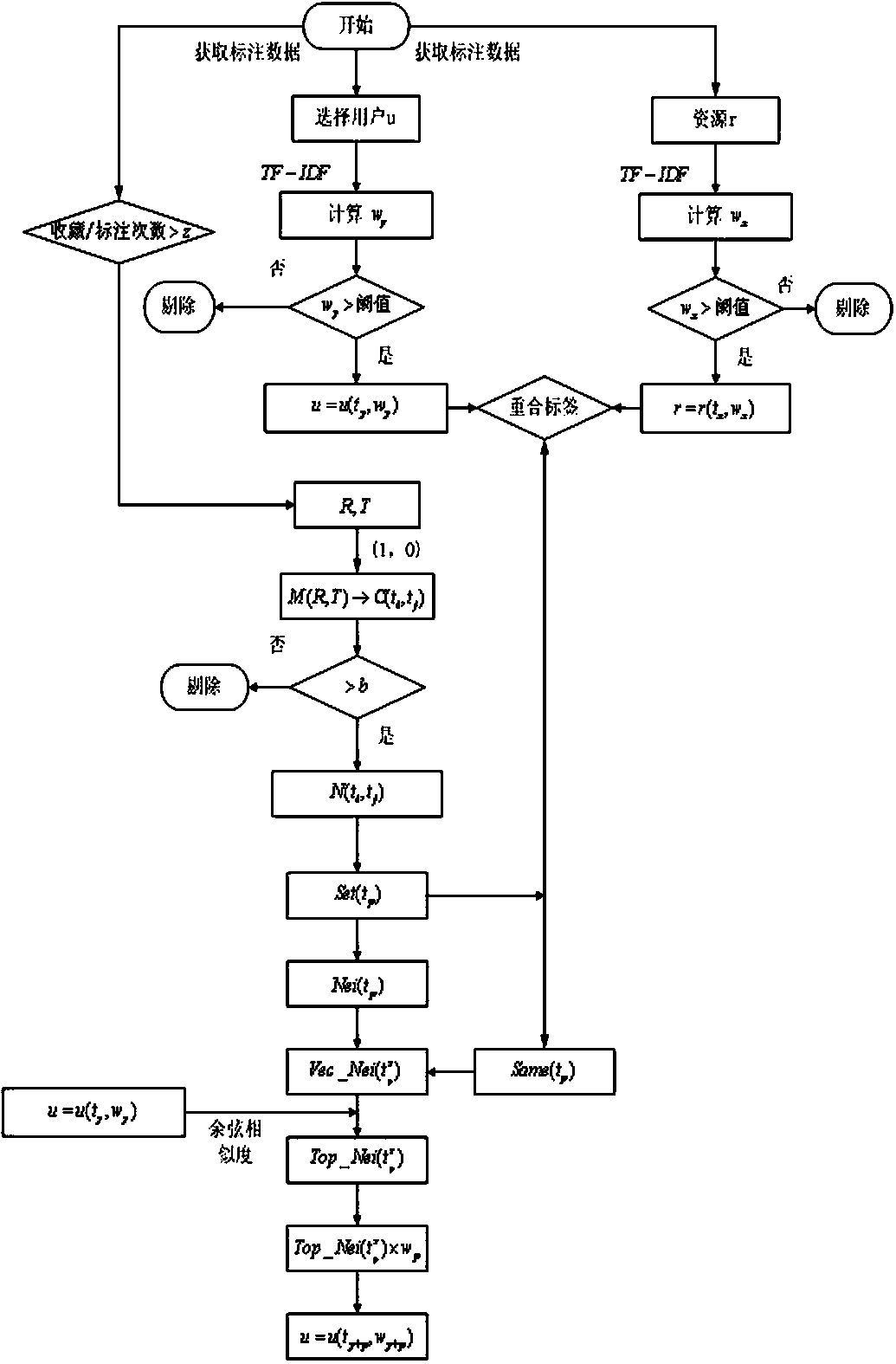A User Model Construction Method Based on Tag Disambiguation
A user model and label technology, applied in the field of user model construction based on label disambiguation, can solve problems such as disambiguation of polysemous words, weak semantic information, and inability to identify labels, and achieve the effect of overcoming label ambiguity, clear semantics, and eliminating label ambiguity
- Summary
- Abstract
- Description
- Claims
- Application Information
AI Technical Summary
Problems solved by technology
Method used
Image
Examples
Embodiment Construction
[0043] The present invention will be further described below in conjunction with the accompanying drawings.
[0044] refer to figure 1 , figure 2 , a user model construction method based on label disambiguation, including the following steps:
[0045] 1) Crawl the website user labeling data from the API port provided by the labeling website, make statistics on the resource information (URLs) that the user has added labels, and establish a labeling resource information database;
[0046] 2) Construct a user model and a resource model according to the user, resource, and label information in the labeled resource information database;
[0047] 2.1): Select a user in any label website, obtain all the resource information marked by it from the marked resource information database, and establish a corresponding resource set R;
[0048] 2.2): According to the label occurrence frequency of each resource r in the resource set R, apply the TF-IDF algorithm to calculate the weight w ...
PUM
 Login to View More
Login to View More Abstract
Description
Claims
Application Information
 Login to View More
Login to View More - R&D
- Intellectual Property
- Life Sciences
- Materials
- Tech Scout
- Unparalleled Data Quality
- Higher Quality Content
- 60% Fewer Hallucinations
Browse by: Latest US Patents, China's latest patents, Technical Efficacy Thesaurus, Application Domain, Technology Topic, Popular Technical Reports.
© 2025 PatSnap. All rights reserved.Legal|Privacy policy|Modern Slavery Act Transparency Statement|Sitemap|About US| Contact US: help@patsnap.com



